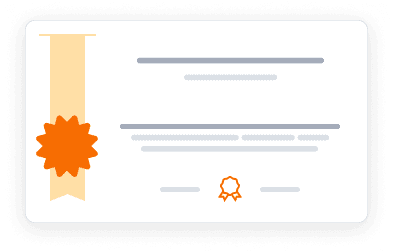Learn embedded Linux development with DragonBoard 410c, from basic setup to advanced sensor integration.
Learn embedded Linux development with DragonBoard 410c, from basic setup to advanced sensor integration.
This course cannot be purchased separately - to access the complete learning experience, graded assignments, and earn certificates, you'll need to enroll in the full Internet of Things and AI Cloud Specialization program. You can audit this specific course for free to explore the content, which includes access to course materials and lectures. This allows you to learn at your own pace without any financial commitment.
3.7
(34 ratings)
10,055 already enrolled
Instructors:
English
ଓଡ଼ିଆ, Tiếng Việt
What you'll learn
Set up and configure DragonBoard 410c
Master embedded Linux basics
Interface with sensors and actuators
Implement version control with Git
Troubleshoot hardware issues
Skills you'll gain
This course includes:
10.9 Hours PreRecorded video
17 assignments
Access on Mobile, Tablet, Desktop
FullTime access
Shareable certificate
Get a Completion Certificate
Share your certificate with prospective employers and your professional network on LinkedIn.
Created by
Provided by

Top companies offer this course to their employees
Top companies provide this course to enhance their employees' skills, ensuring they excel in handling complex projects and drive organizational success.





There are 6 modules in this course
This comprehensive course teaches embedded system development using the DragonBoard 410c platform. Students learn Linux basics, board setup, sensor integration, and software development workflows. The curriculum covers GPIO programming, Arduino interfacing, and various operating system installations, providing practical hands-on experience with IoT hardware.
Introduction and Supplemental Materials
Module 1 · 2 Hours to complete
DragonBoard Bringup and Ecosystem
Module 2 · 5 Hours to complete
Mezzanines and Sensors (Canned Demos w/ software)
Module 3 · 4 Hours to complete
Advanced Projects and Code
Module 4 · 3 Hours to complete
Changing your Operating System (Supplemental / Optional)
Module 5 · 2 Hours to complete
Rescuing your Bricked Board (Supplemental / Optional)
Module 6 · 1 Hours to complete
Fee Structure
Instructors
IoT and Mobile Technology Innovation Leader
Dr. Ganz Chockalingam serves as Principal Engineer at the Qualcomm Institute, UC San Diego, bringing over 25 years of expertise in mobile technology and software development. After earning his Ph.D. in Electrical & Computer Engineering from the University of Iowa in 1995, his career path included significant roles at Ford Motor Company's Scientific Research Laboratory and co-founding Coolsync Inc., a web-based single sign-on service. His entrepreneurial journey continued at Wingcast, a Qualcomm-Ford joint venture, where he developed wireless telematics applications. Since joining Calit2-UCSD in 2002, he has led groundbreaking research in mobile applications across health monitoring, telematics, and medical domains. On Coursera, he teaches a comprehensive series of Internet of Things courses, including specialized modules on DragonBoard development, cloud services, and mobile surveillance systems. His academic contributions include numerous IEEE journal publications and service as a reviewer for IEEE Transactions on Automatic Control. His unique blend of industrial and academic experience makes him a leading authority in IoT and mobile technology education, with his courses reaching thousands of students globally through the Coursera platform.
Healthcare Technology Innovator and Signal Processing Expert
Harinath Garudadri serves as Research Scientist at the Qualcomm Institute of Calit2, UCSD, transitioning from a distinguished industry career to focus on advancing healthcare technology accessibility. His extensive background spans over four decades, beginning with his education from IIT Bombay and Ph.D. from the University of British Columbia. His career includes 16 years at Qualcomm, where he made significant contributions to speech recognition and audio coding technologies. His impressive portfolio includes 40 granted patents across diverse fields including body area networks, audio processing, video technology, speech recognition, and biomedical signal processing, with an additional 14 pending patents. His current research focuses on healthcare innovation, particularly supporting clinical research for emerging hearing aids and developing technologies to reduce healthcare delivery costs. His work has been instrumental in creating solutions that extend medical care beyond hospital walls through low-power sensing, telemetry of physiological data, and reliable body area networks. His contributions have been widely implemented in commercial cell phones and networks, earning over 3,491 citations for his research publications. At UCSD, he continues to bridge the gap between academic research and practical healthcare solutions, focusing on biomedical signal processing and healthcare technology accessibility.
Testimonials
Testimonials and success stories are a testament to the quality of this program and its impact on your career and learning journey. Be the first to help others make an informed decision by sharing your review of the course.
Frequently asked questions
Below are some of the most commonly asked questions about this course. We aim to provide clear and concise answers to help you better understand the course content, structure, and any other relevant information. If you have any additional questions or if your question is not listed here, please don't hesitate to reach out to our support team for further assistance.





